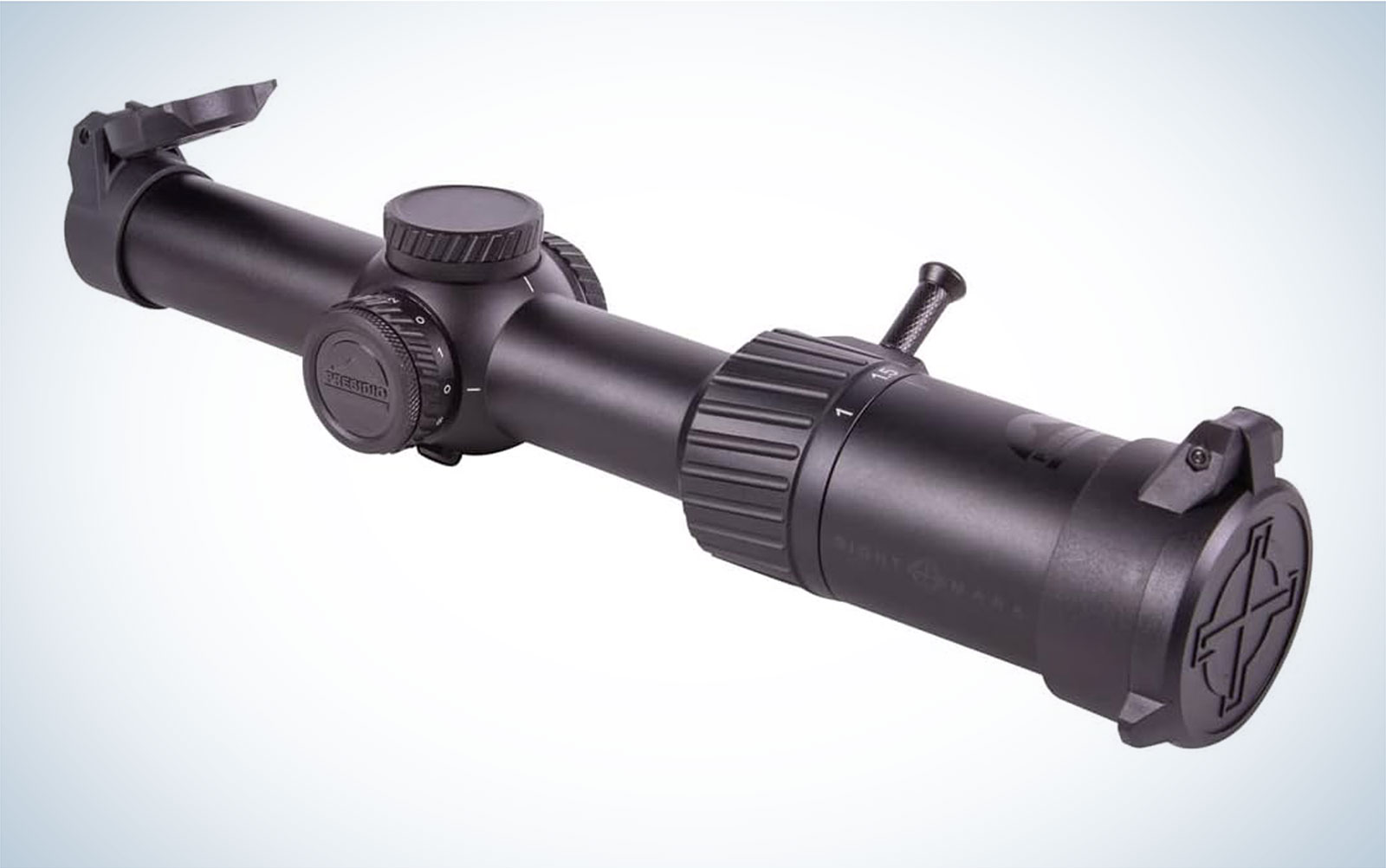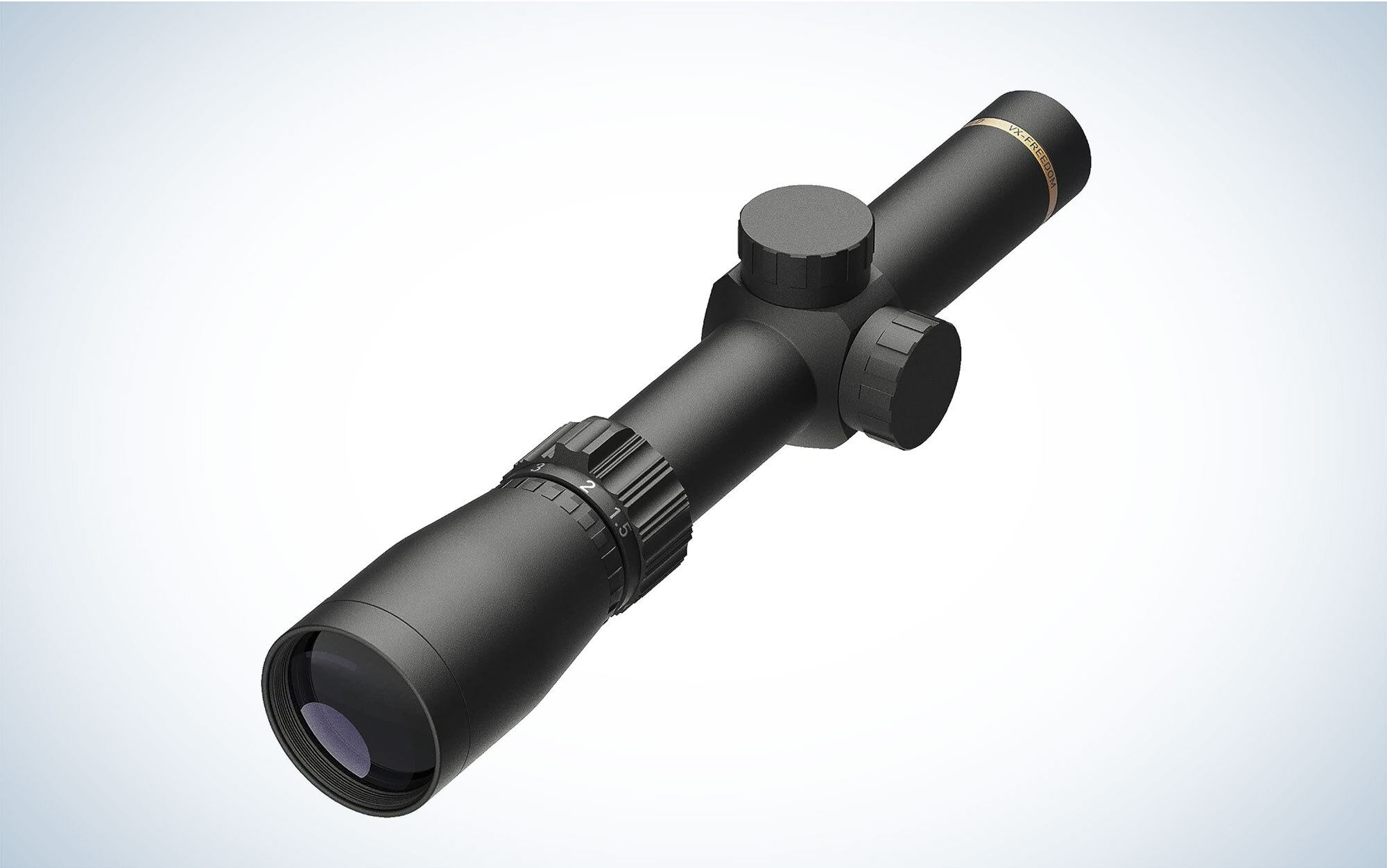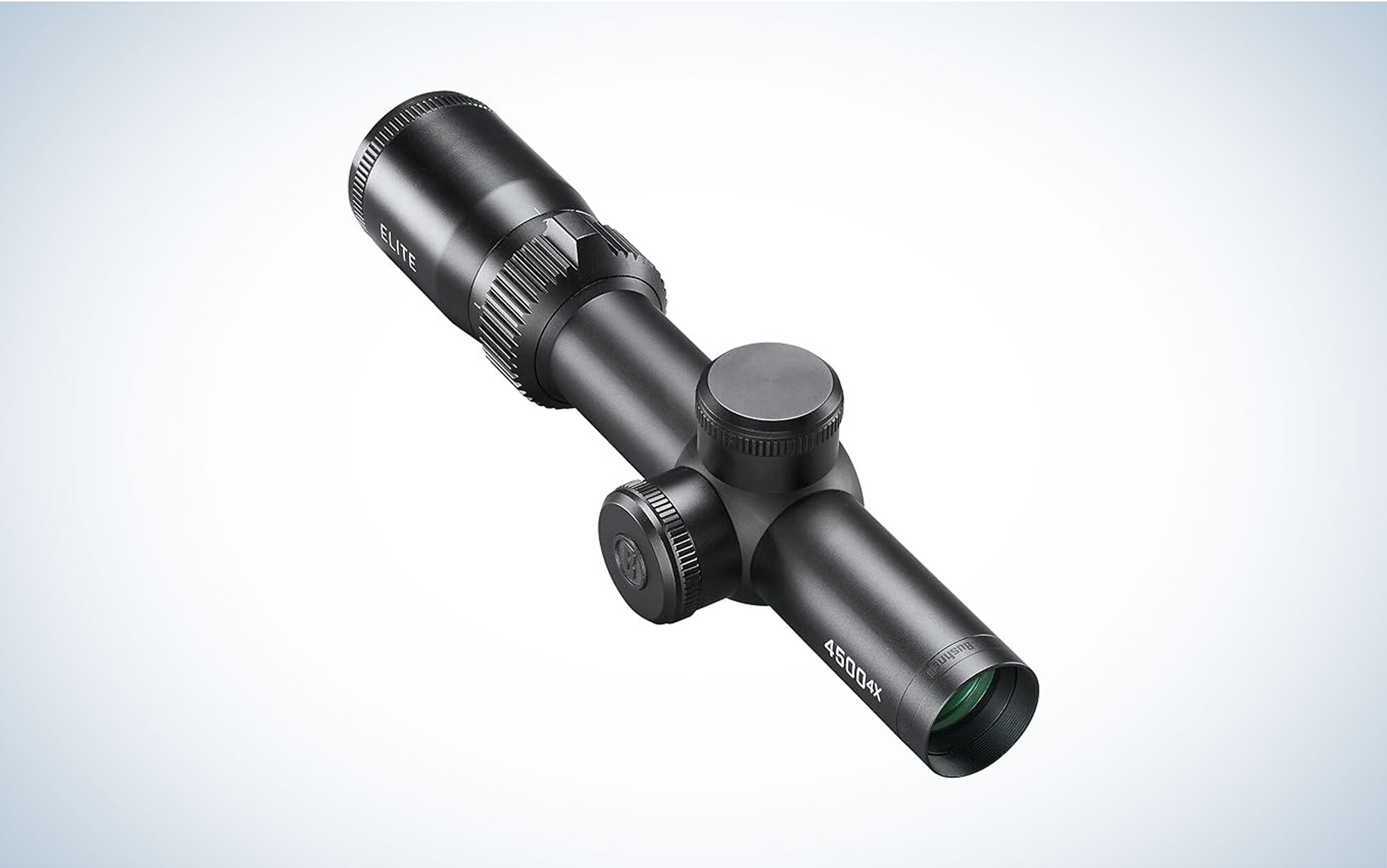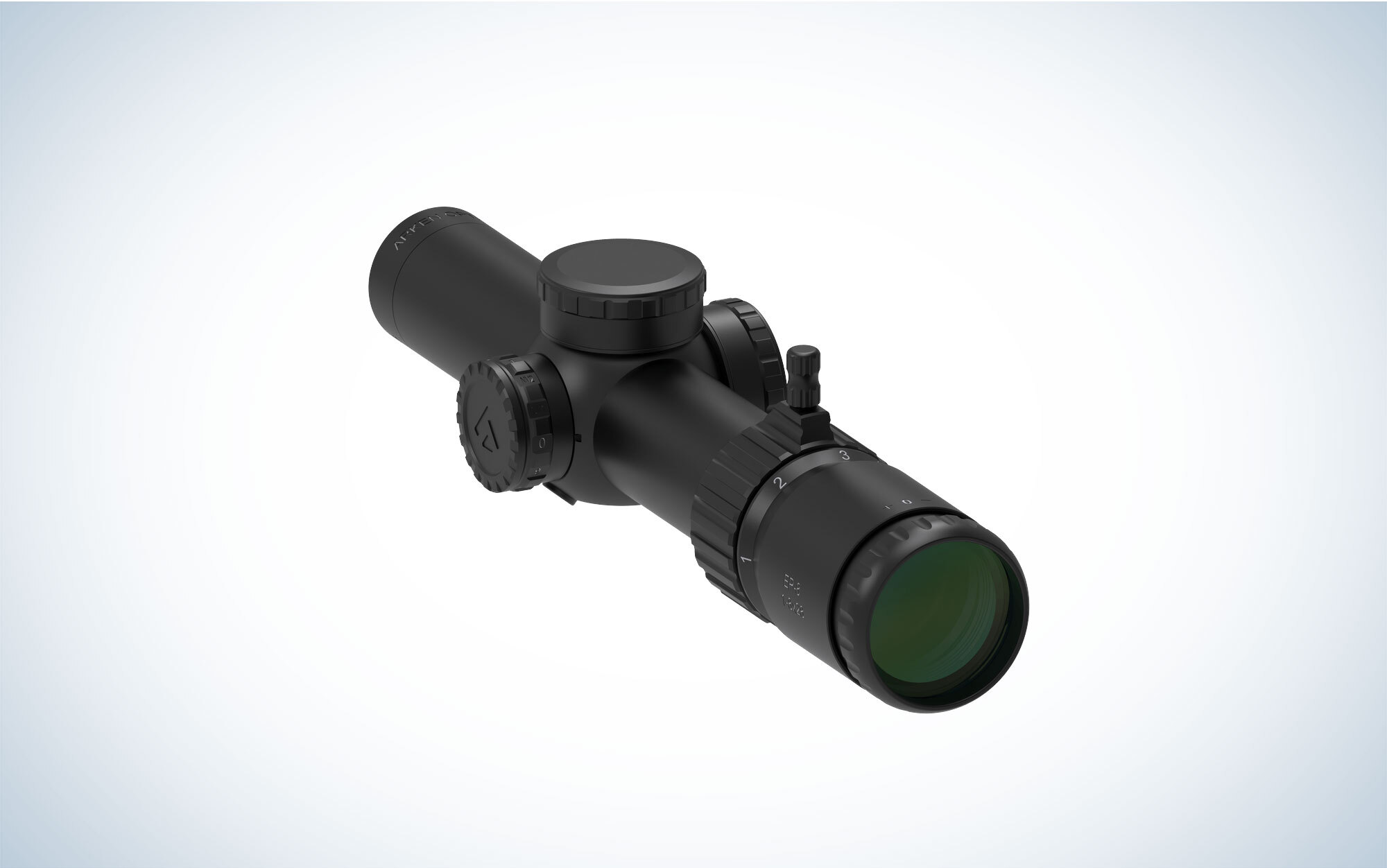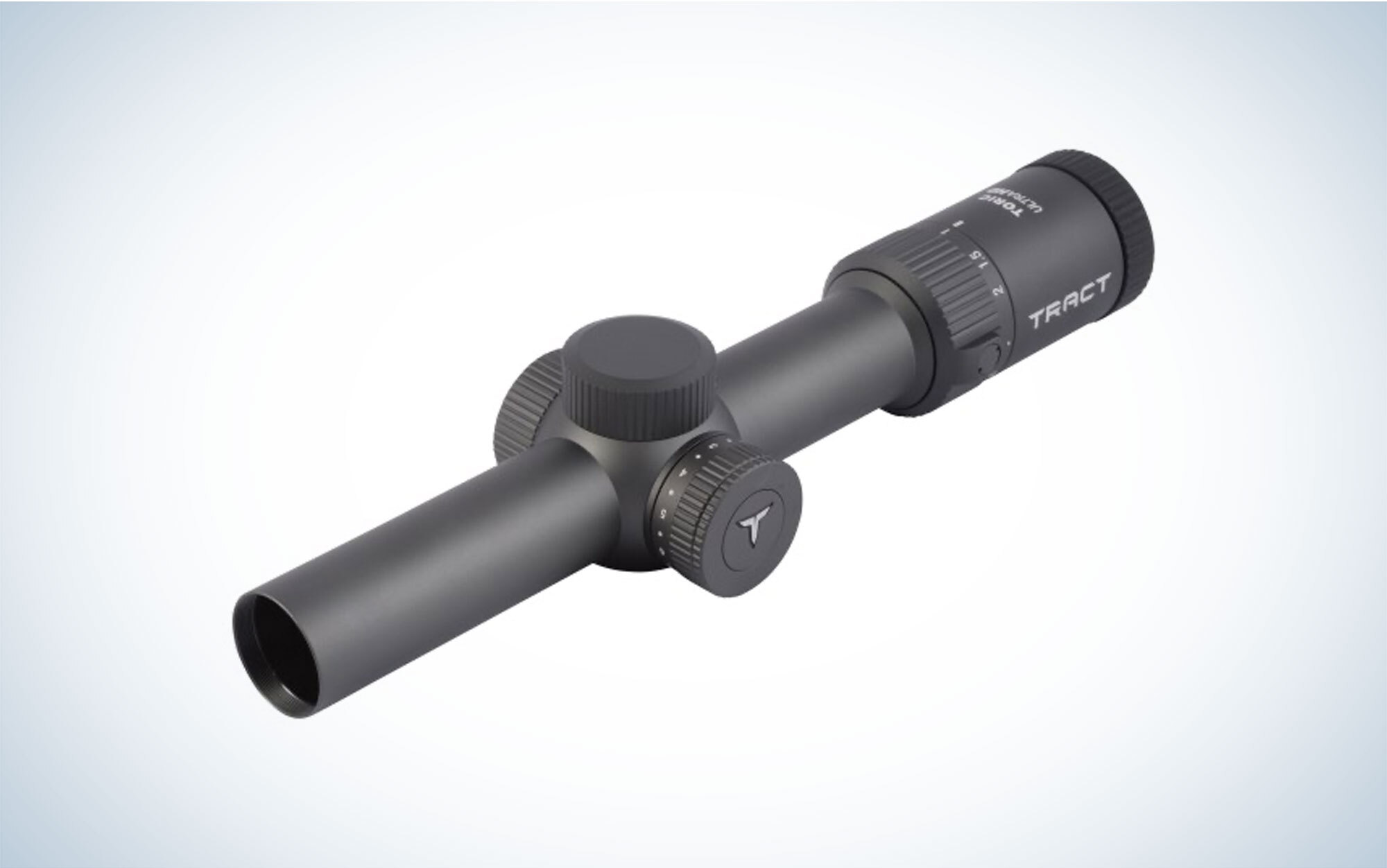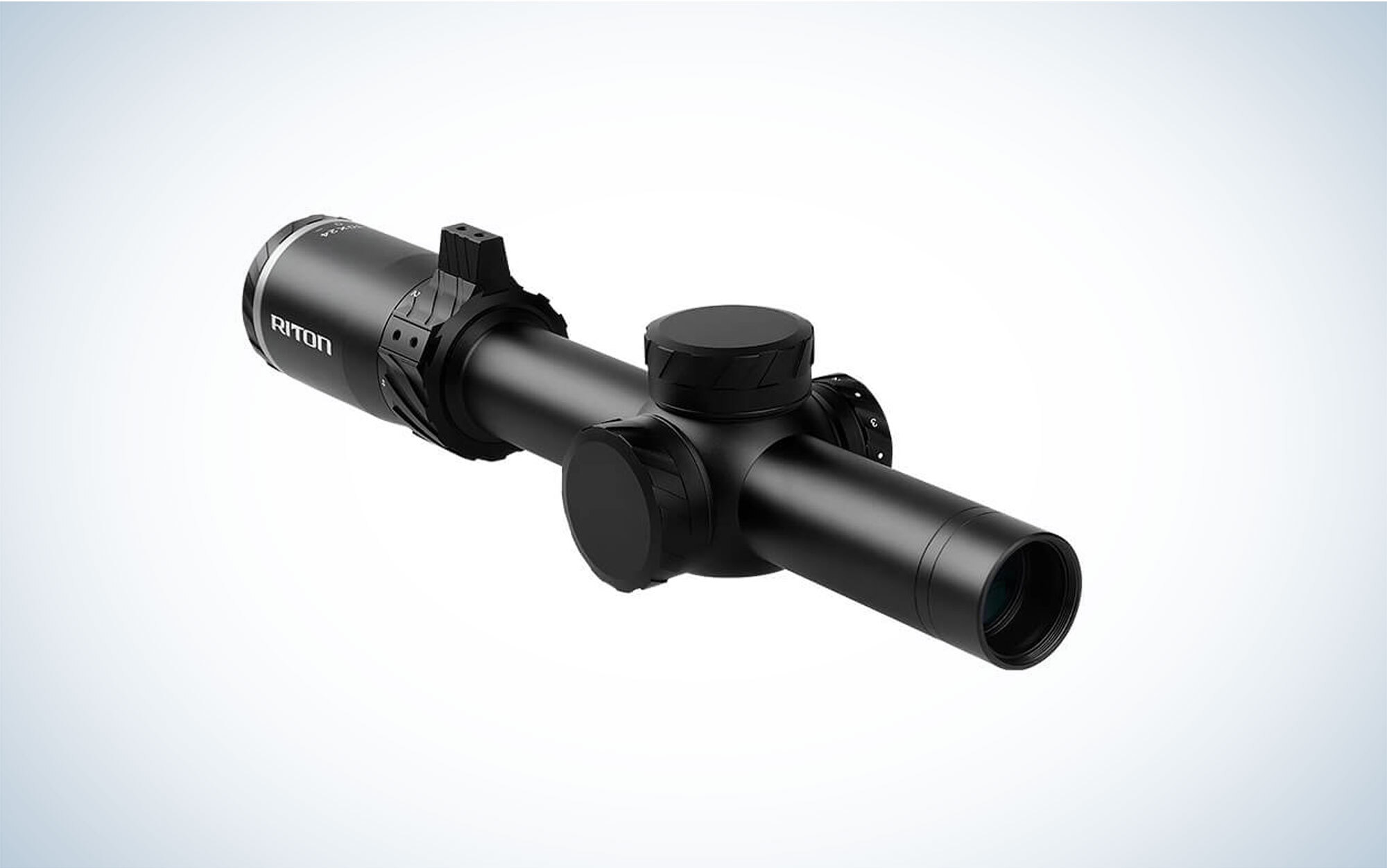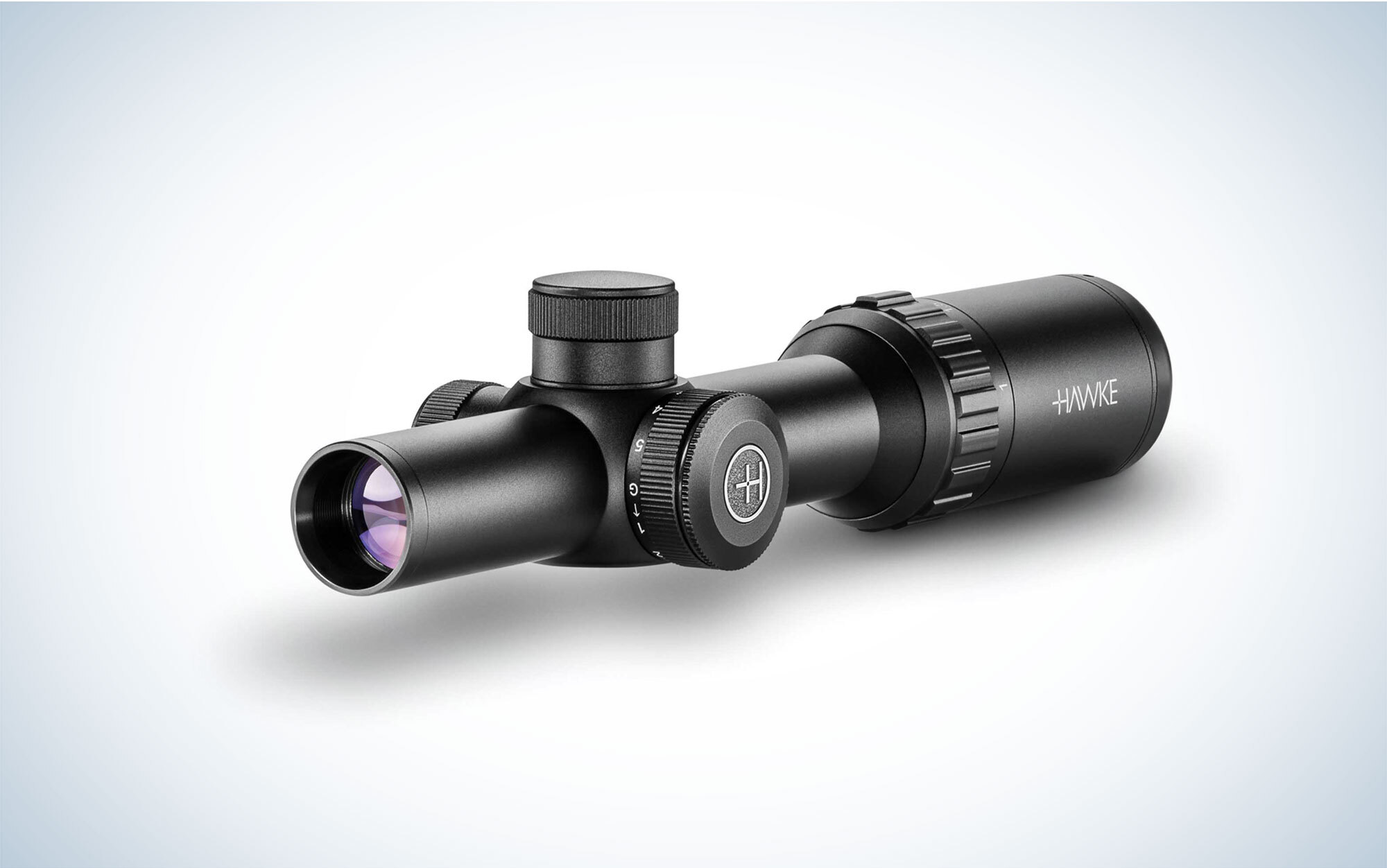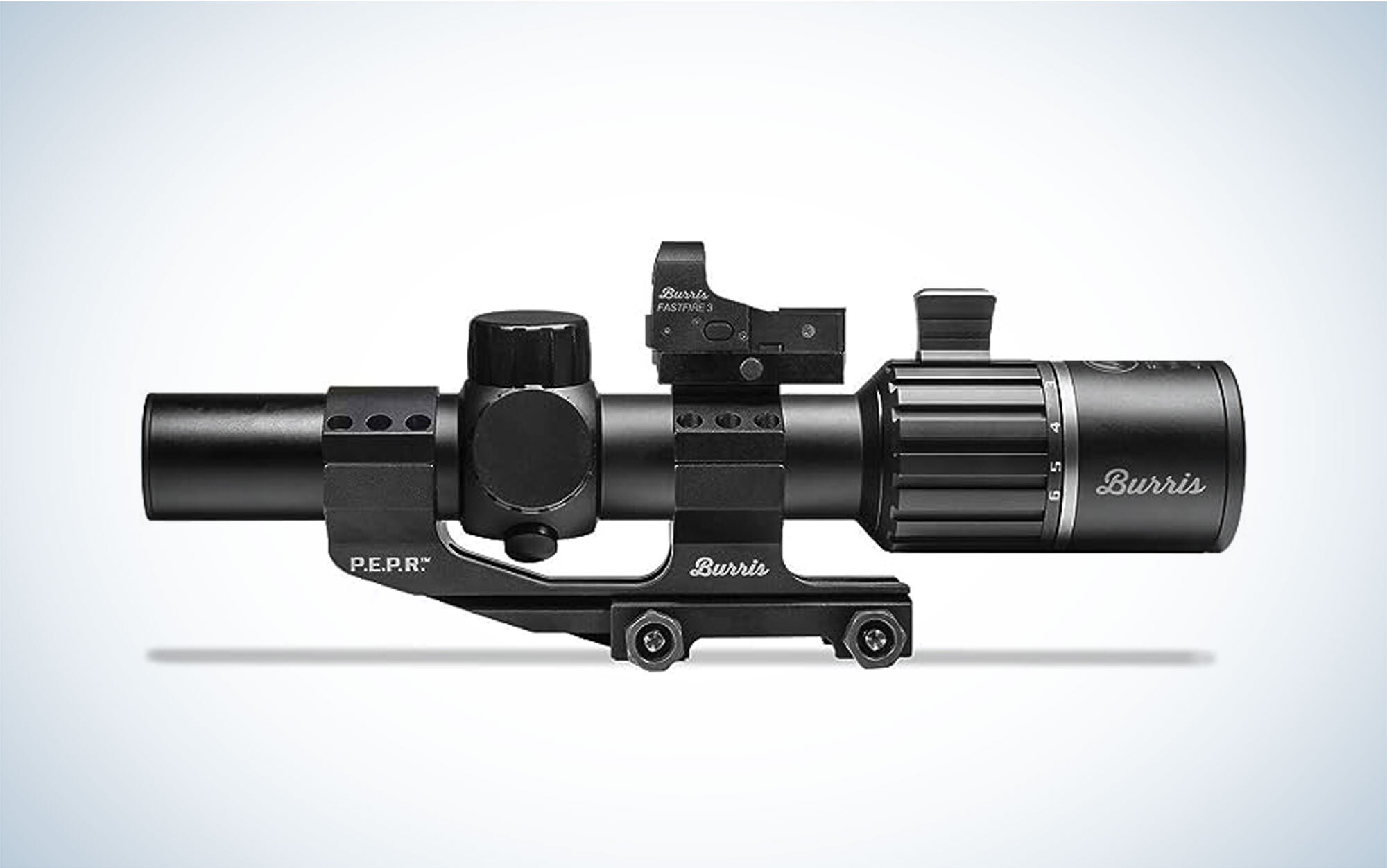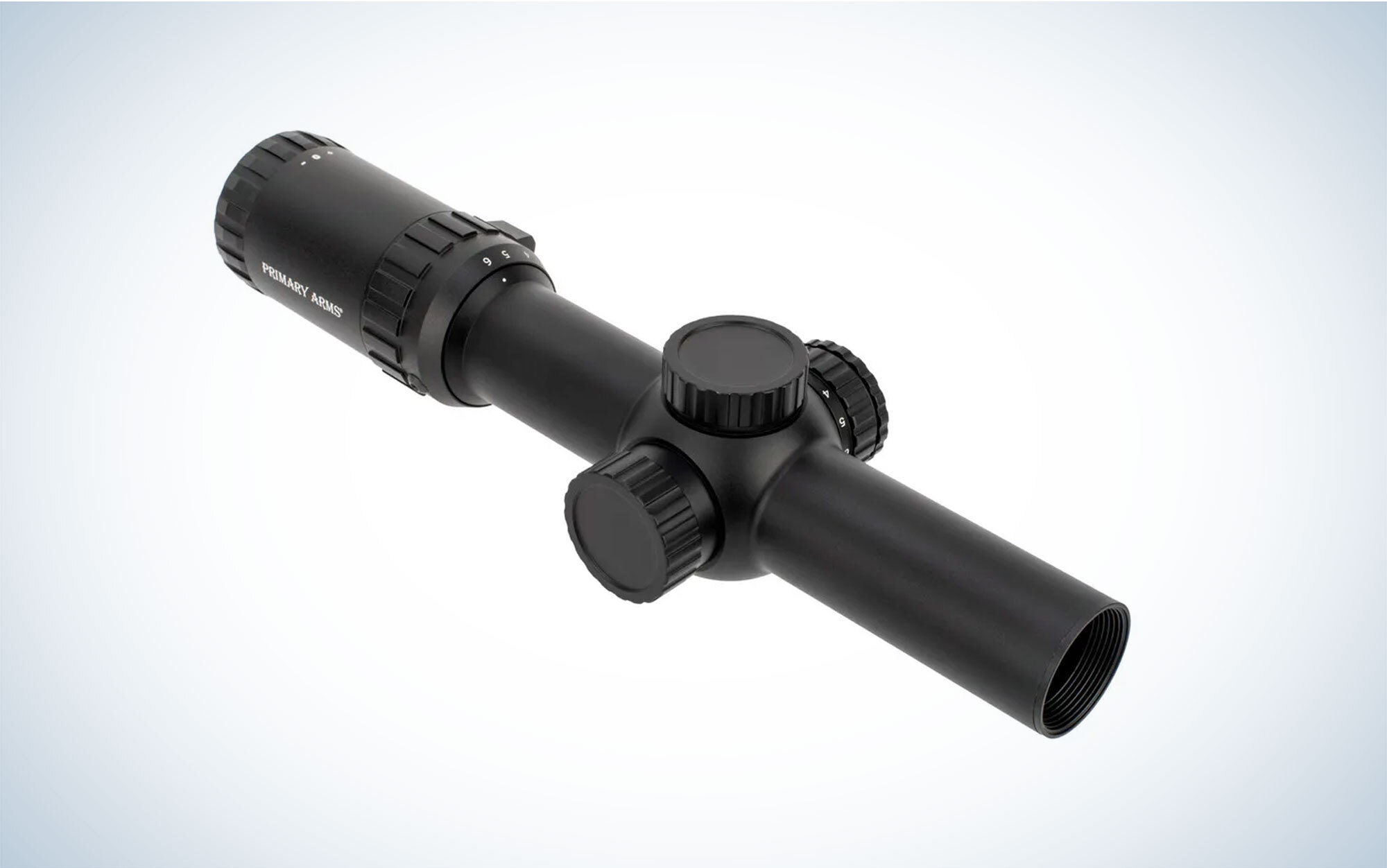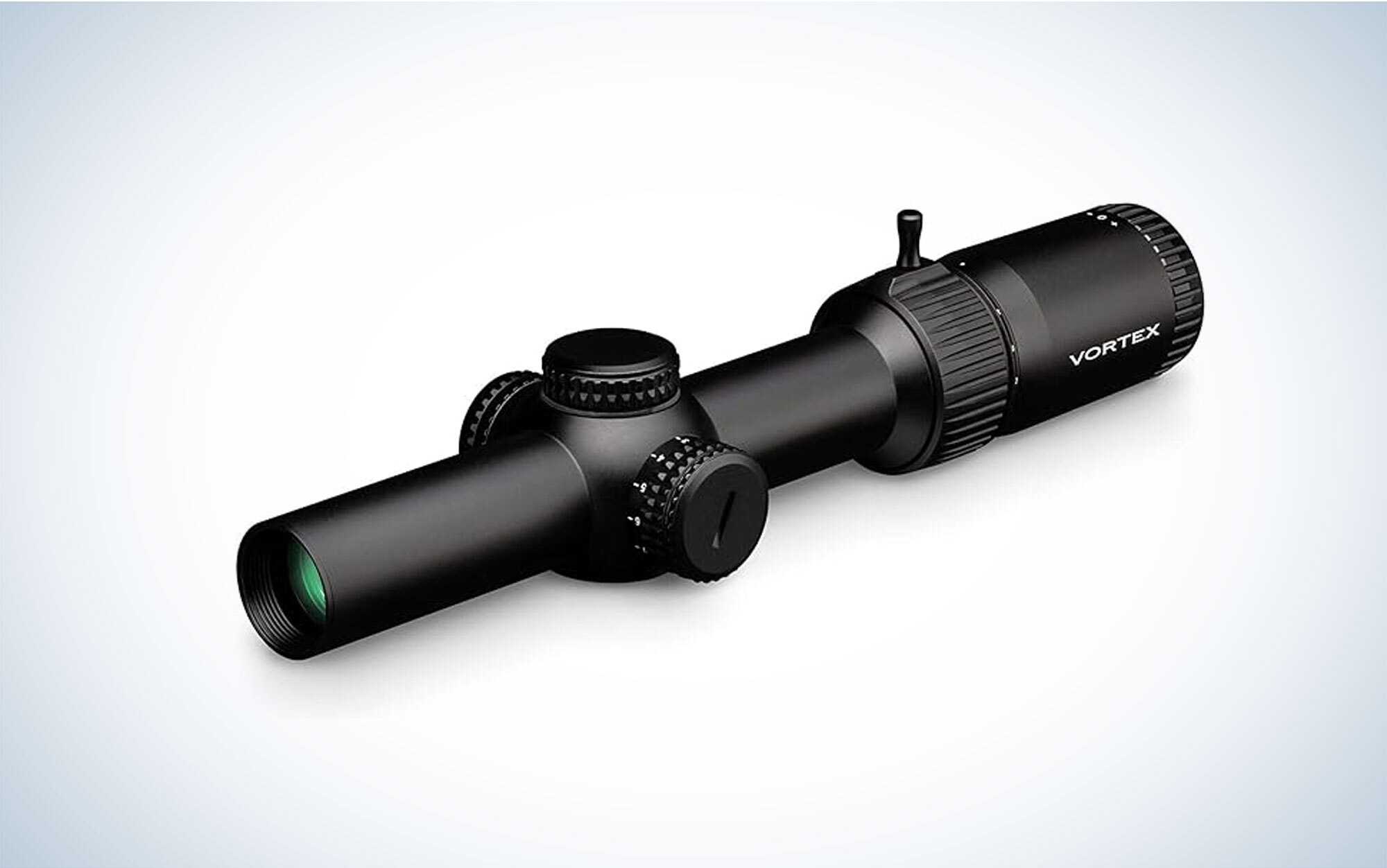We may earn revenue from the products available on this page and participate in affiliate programs. Learn More ›
There are few optics categories with as much price variation as low-power rifle scopes. You can pay an eye-popping $3,000 for Vortex’s 1-10×24 Razor HD Gen III. Leupold’s Patrol 6HD, which is a fairly pedestrian 1-6×24, retails for $1,400. The average price of the 15 best LPVO (low-power variable optic) scopes in our 2023 Outdoor Life Optics Test was $1,344. But there’s also a big field of budget LPVOs, and to a lot of shooters the more affordable side of this category makes good sense.
Just to have some fun with the price-per-power construct, the average magnification of our LPVO category, full of 1-6 and 1-8-power scopes, was 3.67X. When you divide the average price of our LPVOs by the average magnification, you get $366.38 per unit of magnification.
Compare that to our Precision Scopes class from this year’s OL Optics Test. The average price of the 14 scopes in our test was $1,785, but because the average magnification of this class is so much higher—12X—the average price per unit of magnification is $148, or about half as much as the strangely expensive LPVO category.
I’m still scratching my head over the appeal of $3,000 low-power scopes, but the rise of the category has created room for some interesting price-point optics, too. This roundup is devoted to those low-power scopes that retail for under $500, with a couple notable exceptions. We’ll talk about what you get for that price, attributes you give up for that price, and supply you with real-world intel from our testing to make sure that the budget LPVO you buy is affordable, and not cheap.
Breaking Down LPVOs
The rise of AR platforms has driven innovation and market share of LPVO, sized-down riflescopes that feature low magnification, small objective lenses, and reticles that are designed for fast shooting in relatively dark conditions.
These scopes sometimes have reticle subtensions that mate up with ballistic parabolas of standard .223, .308, or 300 Blackout, common chamberings for ARs. They typically feature illuminated reticles and capped turrets, the idea being that you’re not dialing to a precise aiming point on a distant target so much as pointing and shooting in a dynamic situation. Think personal defense, or nighttime hog hunting, or competition shooting in which you have to move, adjust, and fire at unknown distances in changeable light conditions, sometimes with the aid of a thermal or night-vision module in tandem with your riflescope.
But a funny thing happened along the way to designing a purpose-built optic: The LPVO became our new versatile riflescope, as useful atop a rimfire plinker or straight-wall cartridge carbine as on an AR you might keep in the bedroom closet, and extremely well-suited to turkey shotguns and dangerous-game rifles. This category is maturing quickly, with the significant evolution of dual-purpose first-plane reticles, and this year we saw appealing growth in illumination systems, turret operation, and reticles designed for close-quarters engagement and far-off precision. But as noted we also saw a huge spike in prices for premium LPVOs. Our Outdoor Life test team remarked that the prices of these top-shelf models seem out of phase for what you get. You get far less glass than equivalent 50 and 56mm precision scopes. You get generally less precise turret controls. And you get generally simpler reticles, since most are optimized for fast shooting in low-light situations rather than the pin-point precision of long-range steel.
Our conclusion: The highest-priced LPVOs are so spendy because customers are willing to pay for them. But we’d like to make the case that some of these budget LPVOs, which cost as much as 10 times less than the upper-end models, are not 10 times worse in terms of quality and performance.
How We Tested the Best Budget LPVOs

Just as our test has evolved to evaluate riflescopes on a different basis than we judge spotting scopes and binoculars, because their job as projectile-placement instruments is categorically different from image magnifying and clarifying optics, we test LPVOs differently than precision scopes.
We give slightly less emphasis to turret feedback, for instance, than we do to reticle illumination. And we reward reticle versatility of an LPVO slightly more than we do optical quality, the idea being that these aren’t observational instruments so much as bullet-placement devices.
Because ours is a test of brand-new along with venerated LPVOs, we used a couple of models that we consider the Platonic ideal of the platform for the basis of comparison. For higher-end competition scopes, we used both the Nightforce ATACR 1-8×24 F1 and Vortex’s Razor HD Gen III 1-10×24 as our basis of comparison (both those scopes retail for $3,000). For all-around AR/dangerous game/turkey optics, we used Leupold’s excellent Patrol 6HD as the benchmark. And to compare price-point LPVOs, we used the AR Optics 1-6×24 from Bushnell to assess the attributes and performance shooters can expect from a scope priced under $300. For this budget-minded roundup, we eliminated scopes over about $1,000 from the listing, and instead assessed a few budget scopes that we didn’t include in our full Optics Test. We included a couple scopes over $500, which we consider the upper limit for a budget LPVO, because they bring some features that are worth considering.
Testing Criteria for LVPO Rifle Scopes

Our testing criteria has been sharpened over two decades. First, we measure optical resolution, using the diminishing black-and-white lines of a 1951 Air Force Resolution Target to score the optical performance of each submission. We also measure the low-light performance of each LPVO scope by mounting them to tripods and focusing them as a group at 200 yards at a black-and-white resolution target at twilight, all in order to measure the brightness of the glass. As we discussed, neither resolution nor low-light performance are deal-breakers for this category, but both criteria provide valuable insights into the optical performance of the scope.
Then we take each submission to the shooting range. We put each LPVO through the same regimen of accuracy testing on bullseye targets, tracking and return-to-zero assessment on a 10-minute grid, but we spent relatively more time on shooting drills to assess their combination of instinctive aiming, precision, and versatility. These included rapid target transition drills from standing, seated, and prone positions, followed by a big-bore instinctive shooting drill in which we walked a target course of steel plates positioned anywhere from 20 to 70 yards, and when a referee blew a whistle, the shooter had to find and hit a target within 5 seconds.
How We Scored the Best Budget LPVOs
We break our 10-point scoring into four general categories: optical performance (15 percent of total grade), aiming system (a whopping 60 percent of total grade), design (15 percent), and value (10 percent). The average of these categories is the basis of our grades, detailed below.
Optical performance includes the resolution and low-light tests plus the more subjective assessments of image quality and brightness. Aiming-system performance assesses interior (reticle design, visibility, and utility as well as illumination) and exterior aiming system (turret positivity and indexing, parallax adjustment, zero stop), precision, and shootability. Design considers the exterior finish, interior blacking, mounting dimensions, and durability.
And then our price/value score rates how much scope—along with warranty and amenities such as rings, extra turrets, and lens covers—you get for your money. The LPVO that gets the highest overall score wins our Editor’s Choice award for the best in the category; the optic with the highest price/value score wins our Great Buy recognition, and we give other awards based on specific attributes.
How We Grade LPVO Riflescopes
Our 100-point evaluation adds up to a total numeric score, but we translate those to grades for each submission. Our Optical Performance grade combines the scores from resolution, low-light, and image quality. Our Aiming System Performance grade aggregates the interior/exterior aiming system, precision, and shootability scores. The Design grade considers construction, innovation, versatility, and durability. And then the Price/Value grade is our good-deal grade.
To earn an “Excellent” grade, the average of that category must be 9 or higher, which is extremely hard to achieve. “Very Good” is an average score of 7 to 9. A “Good” grade is 5 to 7. Our “Fair” grade is 3 to 25, and “Poor” is anything under 3.
Best Budget LPVO Riflescopes: Reviews & Recommendations
Best All-Around Budget LPVO: Sightmark Presidio 1-6×24
Report Card
- Optical Performance: Poor
- Aiming System: Good
- Design: Fair
- Price/Value: Very Good
- $299
Key Features
- Second-plane CR1 MOA-based reticle
- 30mm tube
- 6-intensity red illumination
- Parallax fixed at 100 yards
- Capped turrets tuned to .5 MOA click values
- 140 MOA total elevation adjustment
Pros
- At under $300, an affordable LPVO
- Horseshoe/dot BDC reticle is versatile
- Ships with throw lever and lens caps
- Rezeroable turrets
Cons
- Forgettable optics
- Turret indexing is confusing
- Precision capability is limited

This scope will get the job done, especially if the job is ringing steel out to about 300 yards with your AR, and then cleaning plates inside about 100 yards. The second-plane BDC reticle has just enough references to be useful without being distracting, and the illumination blazes at a nicely visible daylight brightness, though its lowest intensity is still too bright for low-light conditions.
But there are sizable jobs this scope won’t get done. Notably, that includes precision distance work. The reticle just doesn’t have enough references to make it effective much beyond that 300 mark. It also may give you a headache. The glass was among the least impressive in the field, finishing near the bottom of our low-light and resolution evaluations, and testers noted some pincushion optical aberration. The controls are also hard to turn.
But testers applauded the abundant value for the Sightmark’s price. For under $300 you get a very serviceable LPVO, with a magnification range that will handle everything from personal defense to predator hunting, packed in a scope that ran our dynamic shooting drills without pause. The 6-step illumination is serviceable and the low-profile rezeroable turrets are decent to dial, though we wish the indexing was more useful.
The Presidio is at home on a rimfire or even a turkey gun. That’s a lot of versatility and value for a fair price, and the main reason the Sightmark is our Great Buy LPVO scope.
Best Hog Scope: Leupold VX-Freedom 1.5-4×20 Pig-Plex
Report Card
- Optical Performance: Good
- Aiming System: Fair
- Design: Fair
- Price/Value: Very Good
- $299
Key Features
- Second-plane MOA-based “Pig Plex” reticle
- 1-inch tube
- Parallax fixed at 150 yards
- Capped turrets tuned to ¼ MOA click values
- 125 MOA total elevation adjustment
Pros
- At under $300, an affordable LPVO
- Tapered bold plex reticle is versatile
- Ships with throw lever
- At 9.6 ounces, extremely lightweight
- Liberal mounting dimensions
Cons
- No illumination
- Cross inside circle reticle obscures small targets

Though this scope is clearly intended for hog hunting—the reticle’s name leaves no doubt about that, and the running boar on the windage turret cap confirms it—this is actually a very useful low-power scope for turkey hunting, rimfire plinking, and even crossbows.
I’ve had this scope mounted on a Browning BAR chambered-in hog-killing .308 Win., for years, and I’ve taken dozens of Texas pigs with the rig. But the scope has much wider utility, thanks to a non-illuminated reticle that splits the difference between offering close-enough precision aiming points and point-and-shoot rapid deployment.
The second-plane Pig-Plex reticle features a 4 MOA center circle for quick target acquisition on moving targets. If you have time and purpose, you can use the reticles’ twin BDC hashes for holds out to 12.6 MOA, and if you’re holding for wind or for running targets, there are windage hashes out 4.5 MOA on either side of the center cross. It should be noted that the second-plane reticle’s subtensions work only at the scope’s highest power.
The reticle’s holdover points are designed for use with a 200- or 300-yard zero, in which case they provide approximate holds out to 600 yards. If you use a 100-yard zero (more likely in a scope with this configuration), then the holds are good out to 500 yards.
We wish this scope had illumination, in order to expand its utility into after-hours situations, whether hog hunting or personal defense, that is a rising expectation of the LPVO platform. But even without an illuminated reticle, the Pig-Plex offers plenty of versatility.
Best Shotgun Scope: Bushnell Elite 4500 1-4×24
Report Card
- Optical Performance: Fair
- Aiming System: Fair
- Design: Fair
- Price/Value: Good
- $179
Key Features
- Second-plane Multi-X duplex reticle
- 30mm tube
- 15.5 ounces
- Parallax fixed at 100 yards
- Capped turrets tuned to ½ MOA click values
- 120 MOA total elevation adjustment
Pros
- At under $180, one of the most affordable LPVOs
- Bold plex reticle is simple and versatile
- Extended 4.4-inch eye relief
- Premium optical coatings
Cons
- No illumination
- No zero stop
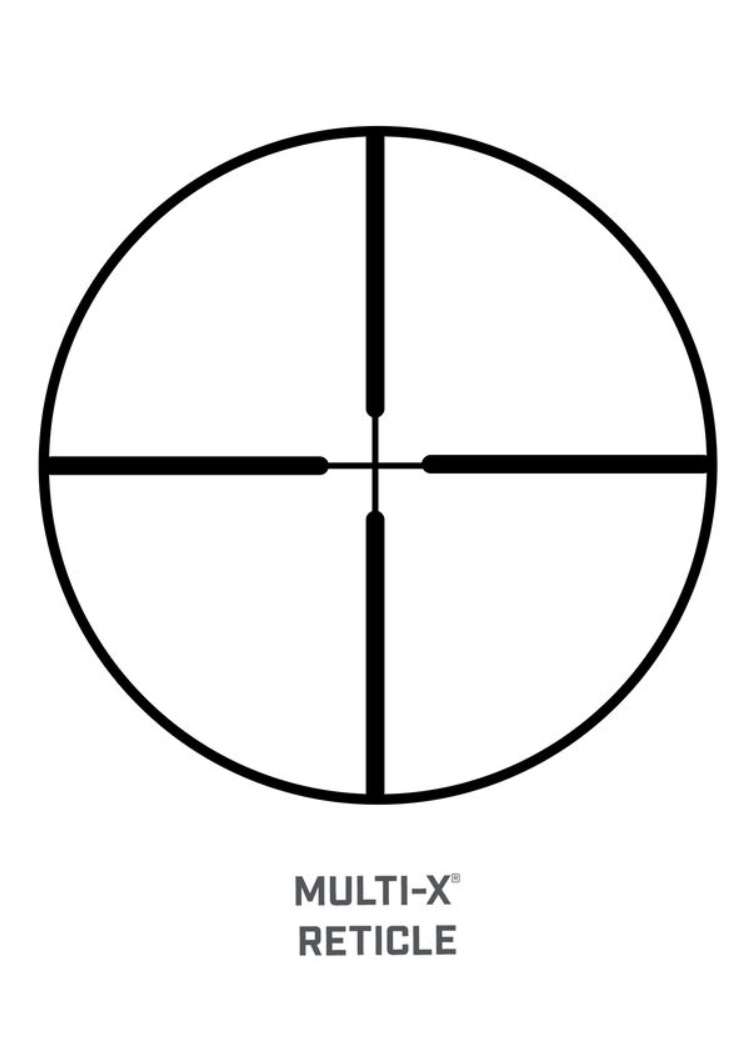
Bushnell rightly calls this a “brush-gun” scope, and that’s a hard designation to argue. It works well for quick deployment in situations with limited visibility, whether that’s because of the obscuring branches of the jungle or the diminished light of evening. We recommend this scope as a do-it-all shotgun optic, at home on a slug gun or a turkey shotgun. And it would be just as useful on a straight-wall cartridge carbine.
If the Bushnell had an illuminated reticle, we might even recommend the scope for a personal-defense AR. But without illumination, and with a reticle that has solid but limited utility, it’s really positioned as a fast-deploying, close-enough reticle that will guide a slug or a slurry of turkey shot to its target with plenty of eye relief, field-of-view, and durability.
Best 3-Gun Scope: Arken EP-8 1-8×28
Report Card
- Optical Performance: Fair
- Aiming System: Good
- Design: Good
- Price/Value: Good
- $339
Key Features
- First-plane reticle
- 34mm tube
- Japanese glass
- ¼ MOA turret click values
- 110 MOA total elevation and windage adjustment
- Integral throw lever
- Red illumination
Pros
- Reticle useful for close- and long-range work
- Daylight-bright illumination
- Extremely affordable for 34mm, FFP scope
- Ships with Flip-Its lens caps
Cons
- Hash-ladder reticle construct is busy and confusing
- Limited availability
Our testers still can’t understand how Arken is able to bring so much performance and feature-rich build to market for such an affordable price. For under $400, you get a big and solid 34mm tube and a versatile first-plane reticle that, at lower magnifications, engages close targets quickly, but at higher magnifications provides precision aiming points for distant targets.

We applauded this reticle when it showed up on EOTech’s first LPVO Vudu, and we’ve seen it employed in higher-priced scopes over the past few years. Arken calls their version the KL-Box; the outer circle features quadrilateral horns that help frame close targets. But the inverted horseshoe is a fast and close-enough aiming point for mid-distance targets at middling magnifications. At full magnification, 7 or 8X, the bullet drop references are adequate for those longer-distance targets. With its numeric references—the elevation steps out to 8, which presumably translates to 80 MOA—the expectation is that shooters start with a 200- or even 300-yard zero, unrealistic for a low-power optic. Instead, most shooters will zero this scope at 100 yards, which puts those holdovers out to 500 or 600 yards. That a very good range of utility.

We gave Arken a few demerits over their inability to get this appealing scope to market. The brand has been advertising its availability for months, but precious few shooters have them strapped to rifles.
Best Dangerous Game Scope: Tract Toric UHD 1-8×24
Report Card
- Optical Performance: Very Good
- Aiming System: Good
- Design: Good
- Price/Value: Fair
- $994
Key Features
- Second-plane MOA-based reticle
- 10-step center-dot illumination
- 30mm tube
- Capped platter-style turrets tuned to ½ MOA click values
- Hash-style reticle
- 100 MOA (30 MRAD) elevation adjustment range
- Distinctive graphite finish
Pros
- Liberal mounting dimensions
- Excellent optics
- Velvety controls
- At 20 ounces and 11 inches, a light, compact scope
- Wide range of utility, from rimfire to big-bore rifles
- Tool-less rezeroable turret
Cons
- Reticle references are confusing
- Limited precision capability
- Turret indexing is hard to read

We know. At nearly $1,000, this stretches the definition of a “budget” LPVO. But we included this excellent scope in the roundup as evidence that that price gets you premium glass, a durable build, and the wide versatility of the LPVO platform, while simultaneously proving the limitations for some very specific shooting situations. The second-plane hash reticle has references on the vertical and horizontal stadia, which experienced shooters can use for rimfire plinking, for quick short-range drills, and for slow-fire shooting at distance. We tested an MOA version of this scope; it’s also available in MRAD.
But because the reticle has no holdoff references for wind adjustments at distance, and because its MOA references are useful at the highest power, this doesn’t bring much to the long-range precision game. That’s okay, because it’s intended to be a fast, simple scope that brings the best 1-power game of all our submissions and has the smoothest, most pleasing controls of the test.
The center-dot illumination is key to the Toric’s appeal. At the highest intensity, the dot (it looks to be about .5 MOA in diameter) offers a bright aiming point that draws your eye to the target. It’s especially quick and intuitive at 1-power, anchoring a huge, bright image that almost appears like you’re not looking through a scope, at all. The Tract’s controls are noteworthy. From the power-changing dial to the turrets and illumination adjustment, all moving parts have the same mellifluous precision.
The Toric scored right in the middle of the pack in terms of low-light performance and optical resolution. For a second-plane design, the reticle received decent marks, though testers questioned the milling hashes. The stadia has marks at 4, 8, and 10 MOA, with 40 MOA of elevation holds. The team thought a more intuitive demarcation would be to have either 5 or 2.5 MOA hashes in order to conform to a base-10 alignment. The other aiming-system quibble we had was the tiny, hard-to-read indexing on the low-profile turrets.
The Tract handled our precision and dynamic target transition drills with grace and talent. But the scope really came into its own during our close-range big-bore work. At 1X to 3X, the scope comes to the eye in a snap and the daylight-bright illumination finds the target like a guided laser. This rapid target acquisition talent, combined with a solid build and simple operation makes the Tract our choice for a dangerous-game rifle, when shots are expected to be both point-blank and at moderate distances.
Best Precision LPVO: Riton 5 TACTIX 1-10×24
Report Card
- Optical Performance: Good
- Aiming System: Good
- Design: Fair
- Price/Value: Fair
- $779
Key Features
- First-plane 30T MRAD reticle
- 30mm tube
- 6-step red illumination
- Capped and rezeroable turrets tuned to .1 MRAD click values
- 40 MRAD internal elevation adjustment
- Airgun safe
Pros
- Ships with multi-position, multi-height throw lever
- Overbuilt steel erector system
- Liberal mounting dimensions
- Easy-turning platter-sized turrets
Cons
- Fairly expensive for performance
- Finicky eyebox
- Internal flaring with most intense illumination
This scope is very close to being a superstar, and we include the nearly $800 optic in this roundup because it brings so many precision-shooting attributes to the category. The 1-10-power magnification range is extremely useful for a wide range of shooting situations. The MIL-based first-plane reticle is very nice, with three tapered posts that lead the eye to a central aiming point. The architecture aids fast target acquisition at lower magnifications, and a tree-style precision reticle with small and large aiming dots guides bullets at higher magnifications.
Riton calls the reticle their 30T, and shooters can use it to hold 11 MILS of elevation and 11 MILS of windage on either side of a .2 MIL center dot inside a segmented circle, both illuminated. If you don’t care to hold, you can dial with nicely configured low-profile turrets.

But our test is designed to tease out shortcomings—much to the chagrin of the optics industry—and we found enough in the 5 TACTIX that we felt this scope isn’t quite ready for either its $800 price tag or its potential. Fundamentally, the eyebox is extremely finicky. Every tester complained that they had a hard time finding the image or keeping their eye aligned, and the problem increases with magnification. That deficiency was especially noticeable on our instinctive shooting drills, in which scopes are deployed on a big-bore rifle to replicate a charging buffalo. It was hard to find the exit pupil in this scope, even at lower powers.
The glass is equally underwhelming. The Riton tied with the Sightmark for the bottom of our low-light rankings, and was only marginally better at resolving details. The otherwise excellent illumination throws enough internal glare at higher intensities that our testers started using less illumination than they wanted simply to tame that non-image-forming light (yes, we call that NIFL). We also detected fisheye distortion at very low powers and edge distortion at almost every magnification.
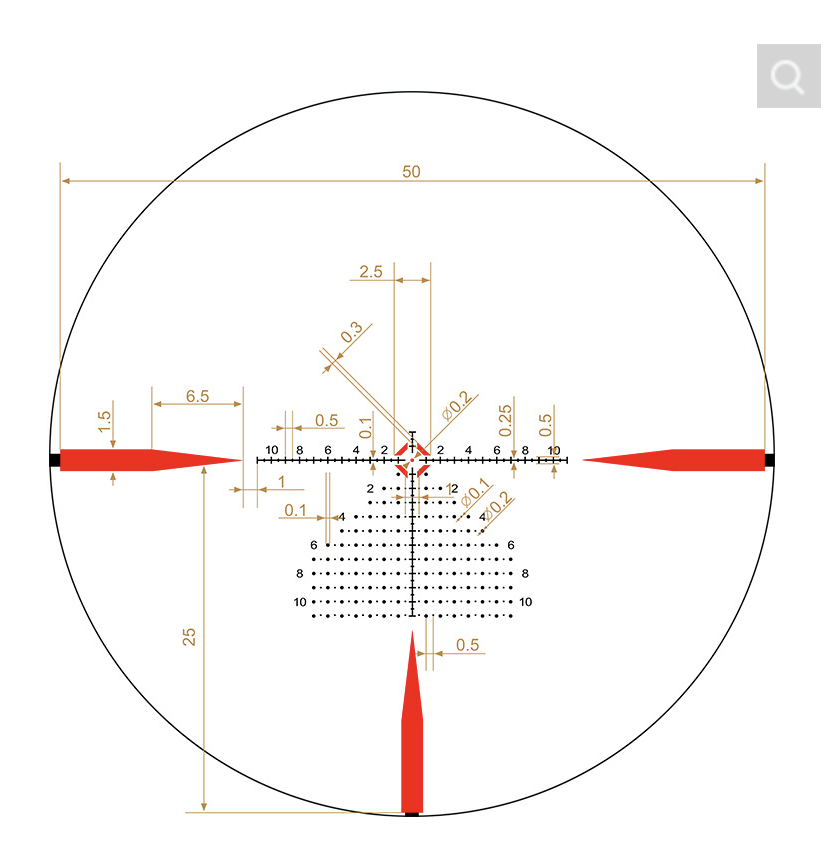
Testers gravitated to a sweet spot with this scope. It’s from about 3X, when the illuminated posts and center circle work together to lead the eye to the target, up to about 8X, when the detailed aiming points are nicely visible but the posts serve as capable brackets. Given the robust versatility of this scope, and its ambition to be a do-it-all LPVO, we’re betting you’ll see a lot more from this brand.
Read Next: Best Long Range Rifle Scopes
Best Turkey Scope: Hawke Vantage IR Dot 1-4×20
Report Card
- Optical Performance: Fair
- Aiming System: Poor
- Design: Fair
- Price/Value: Good
- $239
Key Features
- Second-plane “Turkey Dot” reticle
- 1-inch tube
- 8-stop red-and-green illumination
- Capped turrets tuned to ½ MOA click values
- 110 MOA total internal adjustment
- Parallax fixed at 50 yards
Pros
- Bright fiber-optic illumination system
- At 11.7 ounces, very light
- 4-inch eye relief
- Fast-acquisition reticle with hold-over hashes
Cons
- Limited mounting dimensions
- Limited magnification range

While Hawke has positioned this excellent scope as a turkey-specific optic, it actually has utility far beyond the spring gobbler season. The inverted-circle/center-dot illuminated reticle is configured for quick shots at mid-range targets, but the vertical stadia has hold-over hashes that can help shooters engage distant targets, too. The floating-post reticle is fast and the illumination makes center aiming points pop against a wide variety of backgrounds.
Specifically, the Turkey Dot IR reticle is built around a 2 MOA center dot surrounded by a horseshoe that measures 10 inches at 50 yards. That’s a nice bracket for a gobbler’s head, and one of the reasons this scope gets our nod for the best turkey LPVO in our roundup.
We’re pleased the Turkey Dot IR is covered by Hawke’s no-questions-asked warranty, because we noted some underwhelming mechanics. The turrets are mushy, and we detected some peripheral distortion in the glass. But for well under $250, and with capabilities that would be equally at home on a 350 Legend or a slug gun, this is a great choice for a turkey hunter looking for a dedicated optic for a tight-choked gobbler gun.
And if you want a little more magnification in a platform with more glass, consider Hawke’s excellent 2-7×32 AO Mil Dot, which retails for about $189 and would be at home on just about any rimfire plinker.
Best AR-Platform LPVO: Burris RT-6 1-6×24
Report Card
- Optical Performance: Fair
- Aiming System: Good
- Design: Fair
- Price/Value: Very Good
- $370
Key Features
- Second-plane Ballistic 5X reticle
- 30mm tube
- 11-stop red illumination
- Capped turrets tuned to ½ MOA click values
- 80 MOA total internal adjustment
- Parallax fixed at 100 yards
Pros
- Daylight-bright illumination system
- Reticle tuned to ballistics of 5.56/.223 rounds
- Trajectory compensations out to 600 yards
- Tall, convertible throw lever
- Ships with unimount
- Ships with Pic-rail rings to mount red-dot optic
- Short 10.1-inch length
Cons
- Stingy eye relief at higher magnifications
- Underwhelming glass
Positioned as a 3-Gun competition scope, Burris’s versatile RT-6 is a good fit for a rimfire, straight-wall carbine, or a turkey gun. But it’s at its best atop an AR-15, whether a competition rig or a truck gun. The scope’s reticle is tuned to the drops of a standard-velocity 5.56/.223, and on an AR it can transition from a close-quarters rapid-response scope to a capable longer-range plinker.
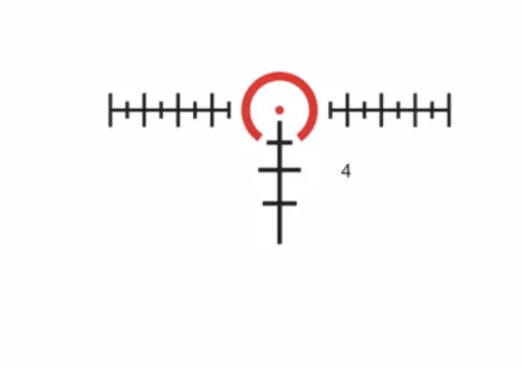
The heart of the RT-6 is Burris’s Ballistic 5X reticle that has an illuminated center dot surrounded by an inverted horseshoe. It’s a design that enables fast target acquisition at lower magnifications. Because it’s a second-plane reticle, the bullet-drop references are valid at 6X, the highest magnification. The vertical stadia has holds out to 600 yards, or nearly 14 MOA of elevation holdover.
The distance holds can best be described as “close-enough” references. Combined with nicely displayed windage holds, shooters can get close to targets beyond 400 yards, but you’ll want to spend some time doping your load and fine-tuning your muzzle velocity to match the scope’s elevation references.
As Burris advertises, this is a fast scope. We found that at 1X it was at its best engaging close- to medium-range targets on our point-and-shoot test designed to mimic the sort of snap shots African buffalo hunters might experience. I don’t know that I’d mount the Burris on a .500 Nitro Express, but it’s a great companion for just about any AR-15 on the market. And if you want even more close-range utility, the RT-6, which ships with a very good unimount, also ships with scope rings that feature Picatinny rails so shooters can mount an optional red-dot sight on top of their magnified scope.
Read Next: Best Rifle Scopes
Best Versatile LPVO: Primary Arms SLx 1-6×24
Report Card
- Optical Performance: Good
- Aiming System: Good
- Design: Fair
- Price/Value: Very Good
- $339
Key Features
- Multiple configurations in SLx line
- 30mm tube
- 11-stop red illumination
- Capped turrets tuned to .1 MIL click values
- 120 MOA total internal adjustment
- Parallax fixed at 100 yards
- Integrated dovetail throw lever
Pros
- Daylight-bright illumination system
- Reticle tuned to ballistics of 5.56/.223 rounds
- 4-inch eye relief
- Wide variety of reticle types
- Short 10.4-inch length
- Night-vision compatible
- Aggressively textured controls
Cons
This isn’t a single scope. Instead, it’s a whole product line from a fairly new brand that includes LPVOs with second-plane reticles, first-plane reticles, some calibrated to specific calibers, others with aiming references that can accommodate any bullet and shooting situation. Because of the wide breadth of the product line, we’ll talk about commonalities shared by the various models.
The SLx in our test features a second-plane Gen IV illuminated ACSS Nova Fiber Wire reticle with excellent daylight-bright red illumination and references tuned to the drops of both 5.56/.308 chamberings. In other words, it’s designed as a companion to either AR-15s or AR-30s. It should be noted that the SLx product line has reticles tuned to the drops of .300 Blackout and .22 long rifle. The model is also available with first-plane reticles.
Retailing for under $350, with excellent customer service and warranty protection, this is a brand and a product line worth considering for just about any platform, whether an AR or not.
Best 5.56 Scope: Vortex Strike Eagle 1-6×24
Report Card
- Optical Performance: Fair
- Aiming System: Good
- Design: Good
- Price/Value: Fair
- $499
Key Features
- AR-BDC3 reticle in second plane
- 30mm tube
- 11-stop red illumination
- Capped turrets tuned to ½ MOA click values
- 140 MOA total internal adjustment
- Parallax fixed at 100 yards
- Optional throw lever
Pros
- Dot-broken-circle reticle is fast
- Reticle tuned to ballistics of 5.56/.223 rounds
- 4-inch eye relief
- Excellent windage and elevation references
- 30 MOA of elevation holds
- 16 MOA illuminated segmented circle
Cons
- Limited 3.5-inch eye relief
- Relatively pricey compared to peers
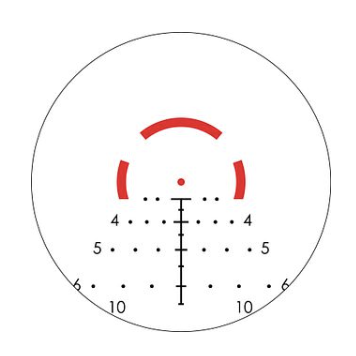
Vortex has embraced the LPVO category with relish. Shooters can pick from the pretty good Crossfire II 1-4×24 that features a “V-Brite MOA” reticle for the accessible price of $289. Or they can step up to the excellent Viper PST Gen II 1-6×24 for $899. Then there’s that crazy-expensive $3,000 Razor HD Gen III. This Strike Eagle strikes the balance between price and performance.
The heart of the Strike Eagle is a BDC reticle with holdover references out to 600 yards. Bullet-drop references are tuned to the ballistics of a standard 5.56/.223 load. The 1 MOA center dot provides a precise aiming point that can get blazingly bright with the 11-intensity illumination. The dot is surrounded by a 16.25 MOA broken circle that guides the eye to the center. It’s a very nimble system for close-in shots in variable light conditions. If you want to reach out to distant targets, the elevation references will get you close. But the dots that provide wind holds out to 6 MOA on either side of the vertical stadia are a rarity in this configuration. Because the AR-BDC3 reticle is in the rear plane, the bullet-drop references are valid only at the highest magnification.
Read Next: FFP vs SFP
How to Choose a Budget Low-Power Variable Rifle Scope
Because this is such a new and rising subset of sports optics, innovation defines the LPVO category. That dynamic alone makes this a buyers’ market. Do you want a do-it-all scope that can dominate a precision steel-target competition and then defend your homestead? Or do you want a simple, durable low-power scope that can toggle between your new 350 Legend lever gun and your turkey shotgun? This category has something for you.
Price-point buyers are wise to look out for a few attributes. First, an unilluminated reticle on a 1-to-something-power scope will frustrate you. You need the aid of a bright, adjustable illuminated aiming point both in low-light conditions and in full sunlight. Second, look for dual-purpose reticles. Here’s where the first-plane models have an advantage. They can transition from capable red-dot sights at the lowest magnifications to precision scopes at higher powers, boosting their value proposition in the process. That’s not to say second-plane reticles are useless. They are excellent choices for turkey and lever guns or for dangerous-game rifles where sure, swift, close-range shots are not only preferred, they may save your life.
For LPVOs under $500, you can expect relatively murky optics. Most brands compensate for that with illumination that makes the reticle pop in a wide variety of light conditions and backgrounds. Pay special attention to eye relief and eye-box comfort. Does the scope come to your eye easily and comfortably at 1- to 3-power? And can you get a wide view at higher magnifications? The best scopes deliver the image even if your eye isn’t fully square with the exit pupil.
Why Trust Outdoor Life?
Since 1898, OL has been a leading authority in testing and reviewing hunting gear, fishing tackle, guns and shooting equipment, and much more. We have more than a century-long history of evaluating products, and we’re now bringing that expertise to online reviews. Our editors are experienced outdoorsmen and women, and most importantly, we’re trained journalists. We prioritize field testing and objective data when reviewing products. We conduct interviews with gear manufacturers and engineers as well as outdoor experts so that our readers have an understanding of how and why a product works—or doesn’t.
Advertising does not influence our gear reviews and it never will. While we always focus our coverage on standout products—because we want our readers to be aware of the latest and greatest gear—we also cover the flaws and quirks of any given product.
Final Thoughts
Just as important as a precise reticle or a battle-hardened pedigree, budget LPVOs should have a very good warranty. That’s not to anticipate that your scope is going to fail, but it’s a good insurance policy to know that if a turret goes out of true or the magnification ring freezes up, you have the ability to get your scope repaired or replaced for either free or for a limited cost to you.

